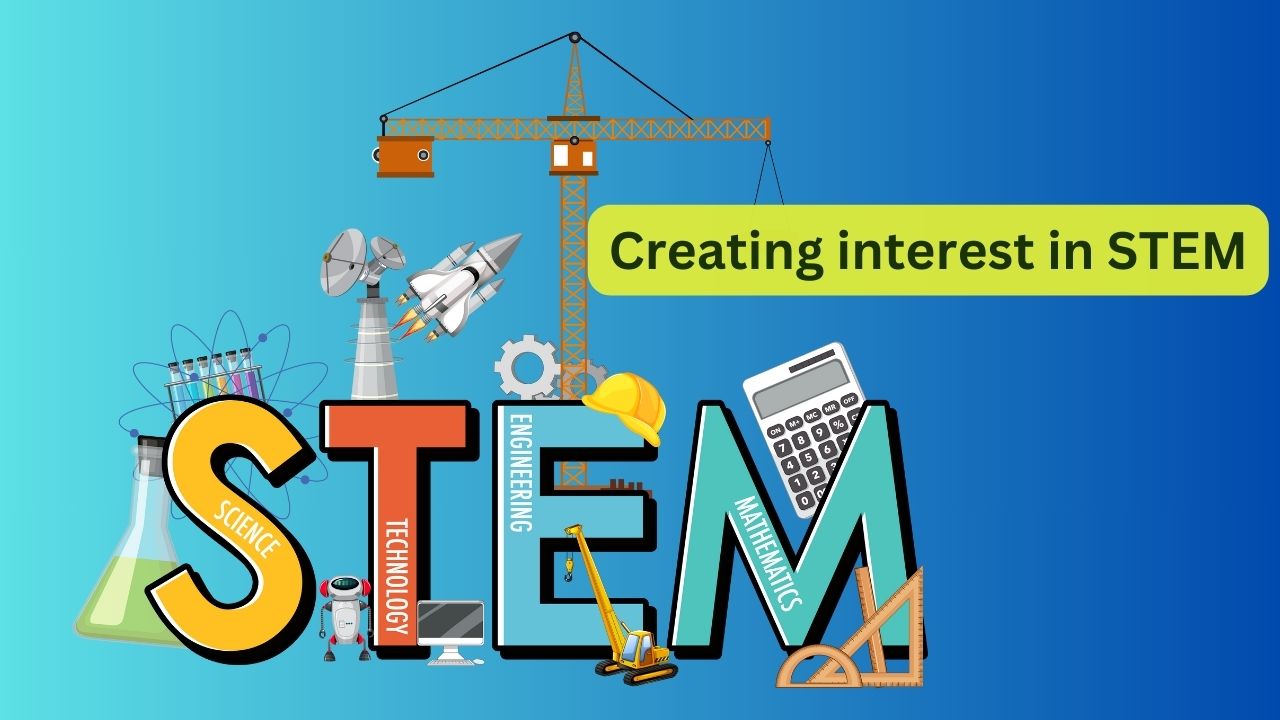Creating interest in STEM (Science, Technology, Engineering, and Mathematics) for kids can be achieved through a variety of engaging, hands-on, and fun activities that make these subjects exciting and accessible. Here are some strategies and activities to foster a love for STEM in children:
Strategies to Create Interest in STEM
- Hands-On Activities:
- Experiments and Projects: Engage kids with simple science experiments, building projects, and coding challenges.
- DIY Kits: Use STEM kits that allow children to build robots, circuits, or conduct chemistry experiments.
- Integrating STEM into Everyday Life:
- Cooking and Baking: Teach concepts like measurements, chemical reactions, and temperatures through cooking.
- Nature Walks: Explore nature to discuss biology, physics, and environmental science.
- Educational Toys and Games:
- STEM Toys: Provide toys that promote building, problem-solving, and exploration, such as LEGO sets, Snap Circuits, or coding robots.
- Games and Apps: Use educational games and apps that teach coding, math, and science concepts.
- Encourage Curiosity and Questions:
- Ask and Answer: Encourage kids to ask questions and explore answers together through research or experiments.
- Problem-Solving: Present real-world problems and brainstorm solutions together.
- Role Models and Mentors:
- Guest Speakers: Invite scientists, engineers, and tech professionals to talk about their work.
- Mentorship Programs: Pair kids with mentors who can provide guidance and inspiration.
- Field Trips and Events:
- Museums and Science Centers: Visit places that offer interactive exhibits and hands-on learning opportunities.
- STEM Fairs and Competitions: Participate in local science fairs, robotics competitions, or coding events.
- Reading and Media:
- Books: Provide books that feature STEM topics and characters who are scientists, engineers, or inventors.
- TV Shows and Documentaries: Watch educational programs that explore STEM subjects in an engaging way.
Activities to Foster STEM Interest
- Building and Construction Projects:
- Create Structures: Use materials like LEGO, K’NEX, or cardboard to build bridges, towers, or models.
- Simple Machines: Build simple machines like pulleys, levers, and gears to understand mechanical concepts.
- Coding and Robotics:
- Block-Based Coding: Start with visual programming languages like Scratch to introduce coding concepts.
- Robotics Kits: Use kits like LEGO Mindstorms or VEX Robotics to build and program robots.
- Science Experiments:
- Volcano Eruption: Create a baking soda and vinegar volcano to demonstrate chemical reactions.
- Plant Growth: Grow plants from seeds to learn about biology, photosynthesis, and environmental factors.
- Math Games and Challenges:
- Math Puzzles: Solve puzzles and brain teasers that involve logic and mathematics.
- Everyday Math: Incorporate math into daily activities, such as cooking measurements or budgeting.
- Engineering Challenges:
- Bridge Building: Use popsicle sticks and glue to construct bridges and test their strength.
- Egg Drop: Design a contraption to protect an egg from breaking when dropped from a height.
- Exploring Technology:
- Disassemble Gadgets: Safely take apart old gadgets to learn about their components and how they work.
- Digital Creation: Use software to create digital art, music, or animations.
Conclusion
To spark an interest in STEM for kids, it’s crucial to make learning interactive, relevant, and fun. By providing hands-on activities, real-world applications, and opportunities for exploration and creativity, you can foster a lifelong curiosity and passion for science, technology, engineering, and mathematics. Remember to be patient and encouraging, as every child will have unique interests and ways of engaging with these subjects.


No responses yet